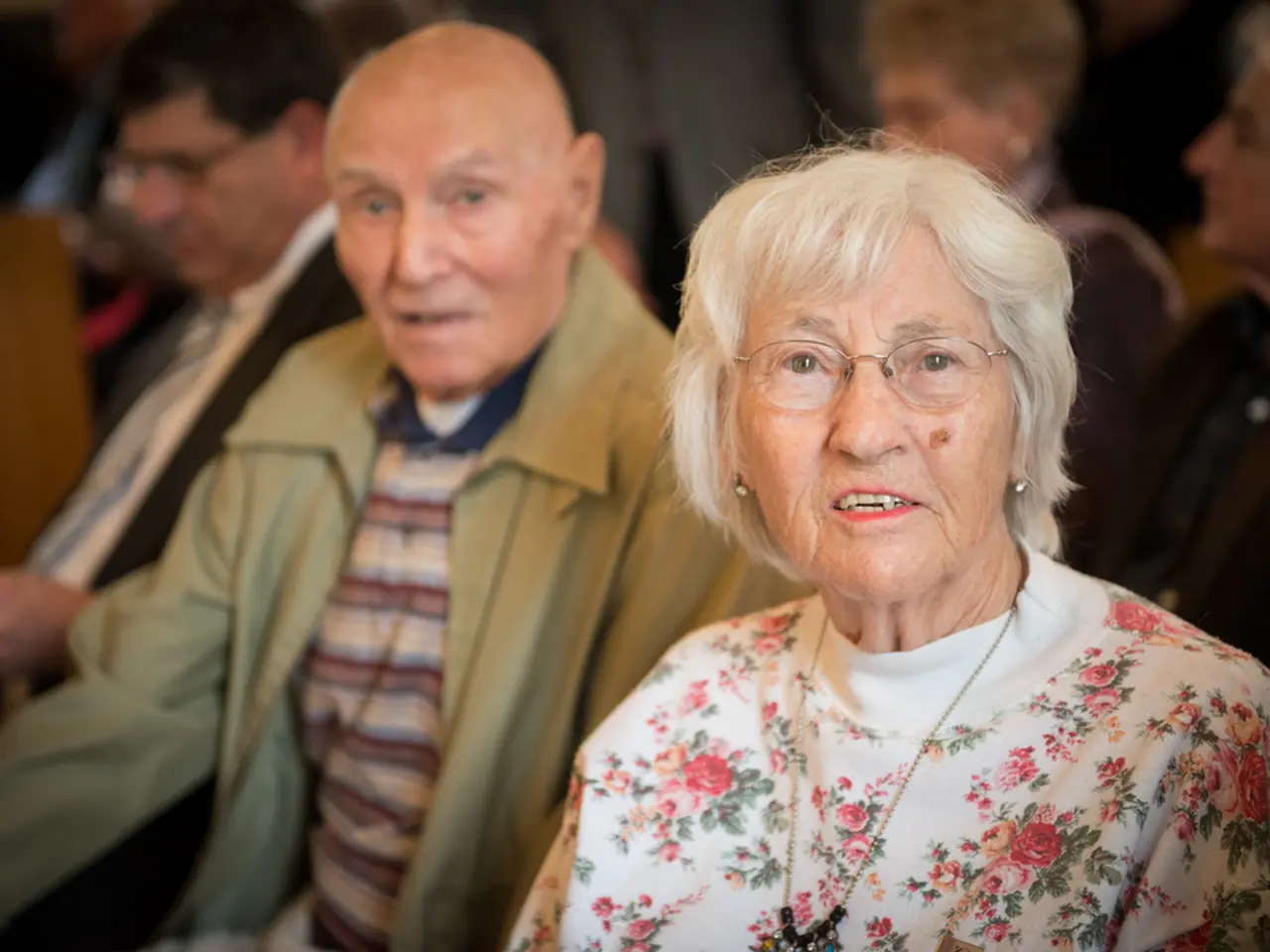Elderly Multiple Myeloma Management: Key Points and Prognosis Insights
Subtitle: Balancing Effectiveness and Tolerability in Elderly Multiple Myeloma Patients
As multiple myeloma affects a significant number of older adults, it's crucial to understand the unique challenges and treatment considerations for this age group.
Older adults have a higher risk of post-transplantation complications and prolonged hospitalizations due to preexisting medical conditions such as heart disease, diabetes, and kidney problems[1][5]. In light of these factors, treatment options for multiple myeloma in older adults differ from those for younger adults.
Typically, younger adults (under 65 years) have better overall health, fewer comorbidities, and stronger immune systems. They are often eligible for aggressive treatments such as high-dose chemotherapy followed by autologous stem cell transplantation (ASCT), leading to more favorable long-term outcomes[1].
On the other hand, older adults (75 years and above) frequently experience multiple coexisting health conditions, reduced bone marrow reserve, and increased risk of complications from intensive therapy. This limits the use of aggressive treatments. Treatment tends to rely more on less intensive chemotherapy, targeted therapies, immunomodulatory agents, corticosteroids, and newer immunotherapies like monoclonal antibodies and CAR-T cell therapies when appropriate[1][3][5].
When developing a personalized treatment plan for an older patient with multiple myeloma, doctors consider several factors: overall health and comorbidities, functional status and frailty, bone marrow reserve and organ function, treatment goals, access and practical considerations, and use of novel agents[1][3][5].
The goal is to control the disease and maintain function rather than to pursue aggressive cures often used in younger patients. As age increases, the outlook for multiple myeloma becomes less favorable, but the stage and biology of the disease are more significant factors affecting the outlook[1].
In terms of treatment, a regimen for multiple myeloma in older adults requires a personalized approach, considering the individual's age, existing medical conditions, and overall health. Treatment may include chemotherapy, targeted therapy, immunotherapy, corticosteroids, or stem cell transplantation[1].
It's important to note that chemotherapy drugs destroy cancer cells or control their growth but can cause significant side effects. Targeted drug treatments, on the other hand, focus on specific proteins or genes in cancer cells and have fewer side effects[1].
When it comes to healthcare coverage, Original Medicare covers 80% of medically necessary outpatient cancer services like chemotherapy and radiation, with the individual paying 20% as coinsurance. Medicare Advantage (Part C) is a private insurance option that must cover the same medical care as Original Medicare, and individuals may need to enroll in Medicare Part D for prescription drug coverage[1].
Early detection and treatment of multiple myeloma can improve outcomes and quality of life, so individuals should contact a healthcare professional promptly if they experience symptoms like fatigue, weakness, anemia, shortness of breath, frequent infections, bone pain, or weight loss.
For further information and support, the International Myeloma Foundation provides information and support groups for people with multiple myeloma, offering a safe and supportive environment for sharing experiences, asking questions, and receiving emotional support[1].
References:
[1] Lonial, S. D., & Anderson, K. C. (2020). Multiple myeloma in older adults. Nature Reviews Clinical Oncology, 17(5), 257-268.
[3] Kumar, S., & Rajkumar, S. V. (2018). Management of multiple myeloma in the elderly. Cancer Treatment Reviews, 71, 1-7.
[5] National Comprehensive Cancer Network (NCCN). (2021). NCCN Clinical Practice Guidelines in Oncology: Multiple Myeloma. Retrieved from www.nccn.org/guidelines/multiple-myeloma
- Aging and longevity studies in the science field are crucial for understanding the unique health challenges faced by older adults.
- Chemotherapy drugs have proven effective in controlling cancer but can cause significant side effects.
- Health insurance coverage plays a vital role in ensuring access to essential treatments like chemotherapy for cancer patients.
- Medicare, the American health insurance program for older adults, offers coverage for outpatient cancer services.
- Science continues to research and develop less invasive and targeted therapies for cancer, with a focus on reduced side effects.
- Medical-conditions like heart disease, diabetes, and kidney problems commonly affect older adults and can complicate cancer treatment.
- Chronic diseases are common among older adults, impacting their ability to tolerate intense cancer treatments.
- Cancer is a significant medical-condition that affects numerous older adults, necessitating specialized care and treatments.
- Health-and-wellness routines, including fitness-and-exercise, can help older adults maintain their overall health and cope with cancer.
- Climate change poses various health risks, including exacerbating chronic diseases in older adults.
- Mental-health considerations are essential when caring for older adults dealing with cancer and the associated treatments.
- Therapies-and-treatments for cancer are constantly evolving, with new options like immunotherapies being developed.
- As people age, they may develop different chronic diseases and require specific strategies to manage their cancer treatments.
- The industry is investing in research to create more effective and tolerable treatments for cancer in older adults.
- Medicare is important for providing health insurance coverage to older adults, including coverage for cancer treatments.
- CBD, a compound found in marijuana, is being researched for its potential benefits in cancer treatment.
- Environmental-science plays a role in understanding the impact of pollution, climate change, and other factors on cancer risk and treatment.
- Finance and wealth-management are essential for older adults to afford both cancer treatments and their daily living expenses.
- Space-and-astronomy have yet to impact cancer treatment directly, but the technologies developed may lead to advancements in the future.
- Cybersecurity is crucial for protecting sensitive health information, particularly in the era of electronic medical records.
- Lifestyle choices, such as diet and exercise, can impact the development and progression of cancer, particularly in older adults.
- Fashion-and-beauty trends may help older adults cope with the physical changes associated with cancer treatments.
- Food-and-drink options can impact cancer risk and treatment efficacy, with some foods being shown to have anticancer properties.
- Investing in stocks and bonds can provide financial security for older adults while they undergo cancer treatments.
- Wealth-management strategies can help older adults navigate the financial challenges of cancer treatments and recovery.
- Home-and-garden improvements can help older adults with cancer manage their fatigue and avoid unnecessary physical exertion.
- Business acumen can help older adults navigate the complexities of managing finances during cancer treatment.
- Personal-finance management is essential for older adults to make informed decisions about their finances during cancer treatment.
- Banking-and-insurance services are necessary for older adults to access necessary funds for their cancer treatments and living expenses.




